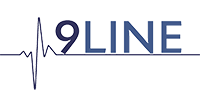In the fast-paced environment of manufacturing facilities, safety and efficiency are paramount. However, one critical aspect often overlooked is 911 compliance, also referred to as E911 compliance—a set of regulations ensuring precise location information is transmitted to emergency responders during 911 calls. For manufacturers, achieving E911 compliance is not just a legal obligation but a crucial measure to safeguard employees and minimize operational disruptions.
Why 911 Compliance Matters
E911, or Enhanced 911, is designed to automatically provide the location of the caller to emergency services. In sprawling manufacturing plants, where multiple floors, production areas, and offices may exist, pinpointing the exact location of an emergency can be a daunting task. Without E911 compliance, first responders may face delays in locating the caller, which can have life-threatening consequences in situations such as industrial accidents, chemical spills, or medical emergencies.
Moreover, compliance with E911 regulations demonstrates a company’s commitment to employee safety and legal accountability. Regulations such as Kari’s Law and the RAY BAUM’s Act mandate direct 911 dialing capabilities and the provision of accurate location information, respectively. Failure to comply can result in hefty fines, reputational damage, and, most importantly, compromised safety.
Challenges in Manufacturing Facilities
Manufacturing facilities often present unique challenges for E911 compliance. These sites may feature expansive layouts with large production floors, warehouses, and specialized equipment zones. Additionally, many facilities utilize multi-line telephone systems (MLTS), which can obscure the caller’s precise location if not properly configured. Mobile workers using wireless devices further complicate accurate location tracking.
Steps to Achieve Compliance
- Assess Communication Systems: Conduct a thorough audit of existing phone systems, including MLTS and VoIP setups, to ensure they support E911 functionality.
- Implement Location Tracking: Deploy technology that enables dynamic location tracking for wired and wireless devices, ensuring precise location data is transmitted during 911 calls.
- Train Employees: Educate staff on how to use communication systems during emergencies, including ensuring they understand Kari’s Law requirements for direct 911 dialing.
- Engage Experts: Collaborate with E911 compliance solution providers to streamline implementation and maintain compliance as facilities grow or change.
E911 compliance is a critical component of a manufacturing facility’s safety strategy. By addressing compliance challenges proactively, manufacturers not only adhere to legal requirements but also foster a safer workplace, reduce response times in emergencies, and demonstrate leadership in employee welfare. Investing in E911 solutions today ensures the well-being of tomorrow.
Manufacturing facilities and all organizations looking to begin their journey towards E911 compliance, or those needing assistance with their current system, can contact the 9Line team. 9Line offers packages ranging from basic assistance to full installations.

